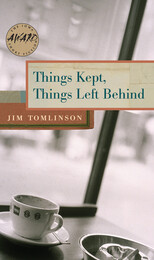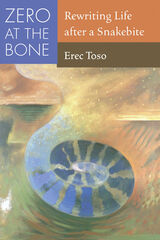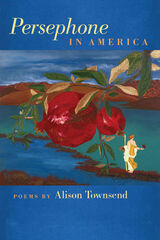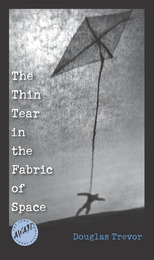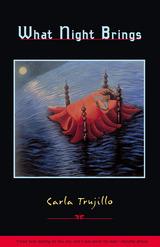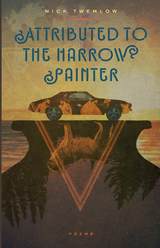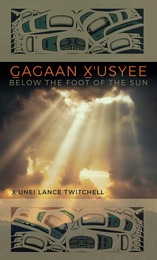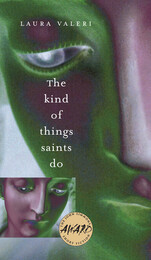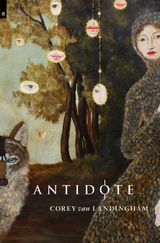Our Earliest Tattoos: Poems
by Peter Twal
University of Arkansas Press, 2018
Paper: 978-1-68226-072-2 | eISBN: 978-1-61075-646-4
Library of Congress Classification PS3620.W425A6 2018
Dewey Decimal Classification 811.6
Paper: 978-1-68226-072-2 | eISBN: 978-1-61075-646-4
Library of Congress Classification PS3620.W425A6 2018
Dewey Decimal Classification 811.6
ABOUT THIS BOOK | AUTHOR BIOGRAPHY | REVIEWS | TOC | REQUEST ACCESSIBLE FILE
ABOUT THIS BOOK
Our Earliest Tattoos destabilizes traditional notions about memory, its permanence and supposed purity, with a simple premise: to remember is to enact violence against the body. Brazen, fragmentary, and intimate, these sonnets depict with astonishing creativity what can come of worshiping the past.
AUTHOR BIOGRAPHY
Peter Twal is a Jordanian-American electrical engineer from Baton Rouge, Louisiana. His poems have appeared in Best New Poets, Kenyon Review, West Branch, and elsewhere. He is a recipient of the Samuel and Mary Anne Hazo Poetry Award.
REVIEWS
“Reading Peter Twal’s Our Earliest Tattoos, I kept thinking of Wallace Stevens’ famous pronouncement that a poem should ‘resist the intelligence, almost successfully.’ Throughout the book, we see a poet of real intelligence who is also intensely attuned to the wants and needs of language itself. Twal’s sky is ‘so heady, thinking the world of itself’—an earth is summoned, called into being by the ether’s own imagination. There is massive intellect pulsing through these poems, which are inflected by the Mars Rover and LCD Soundsystem and God and gravity and and and. But Twal’s genius is in the way he knows exactly when to yield the floor to imagination, which wonders and wanders through love and loneliness and friendship and grief in a million fascinating ways throughout Our Earliest Tattoos. ‘I will love my monster,’ Twal writes, and then he proceeds to show us.”
—Kaveh Akbar, author of Calling a Wolf a Wolf
—Kaveh Akbar, author of Calling a Wolf a Wolf
“Peter Twal’s sonnet sequence explodes inside a pop song. It’s a song of youth and extinction, doomed and well dressed. His instincts are at once traditional and contemporary, his lovers garlanded with strobe light and TV snow and IEDs and birdflight. It’s a thrill to be in the presence of a poet of such a vision, a smith of such lovely smithereens.”
—Joyelle McSweeney, author of The Necropastoral
—Joyelle McSweeney, author of The Necropastoral
“Peter Twal’s beautiful debut makes wholly new frames for figuring a generation too alive for nostalgia and too awake for solipsism. Like a body from one of Goya’s Pinturas Negras, Twal’s speaker emerges out of his knowing impossibilities of scale into our contemporary moment all while coolly texting Death ‘Your attention/ to detail though.’ Nimble in its music and kind, this book is a reservoir of what we wish we’d said, especially when death texts back.”
—Farid Matuk, author of The Real Horse
—Farid Matuk, author of The Real Horse
TABLE OF CONTENTS
CONTENTS
ONE
It’s the Memory of Our Betters
TWO
Like a Sales Force into the Night
I Wouldn’t Trade One Stupid Decision
Made a Fool on the Road
One of the Ways We Show Our Age
Years Trying to Get with the Plan & the Next Five Years
People Who Are Trying to Be Polite
Come Apart in Your Hand
If the Sun Comes Up
You Forgot What You Meant When You Read What You Said
Back to Your House
The Way It Does in Bad Films
You Look Contorted on Yourself
THREE
Oh, This Could Be the Last Time So Here
I Still Don’t Want to Stagger Home
Stand, You Can Sleep on the Plane
The Conversation’s Winding Away
Come Home to This & with a Face
You’re Drunk & the Kids
Sewn into Submission
There’s Always This
FOUR
Leave Impossible Tasks
If You’re Worried about the Weather
Up Late but If You’re Worried
Days in the Middle
You Drop the First Ten Years Just as Fast as You Can
If It’s Crowded, All the Better
Your Ridiculous Prop
It’s Better When We Pretend
We Set Controls for the Heart
You Think Over & Over “Hey, I’m Finally Dead”
The Moral Kicks In
Our Feet, You Spent the First Five
Except in Parts
That’s How It Starts
Weather, Then You Picked the Wrong Place to Stay
FIVE
Where Are Your Friends Tonight
Where Are Your Friends Tonight
Where Are Your Friends Tonight
If I Could See All My Friends Tonight
If I Could See All My Friends Tonight
If I Could See All My Friends Tonight
If I Could See All My Friends Tonight
SIX
You Always Knew You were Tired
Notes
REQUEST ACCESSIBLE FILE
If you are a student who cannot use this book in printed form, BiblioVault may be able to supply you with an electronic file for alternative access.
Please have the accessibility coordinator at your school fill out this form.
It can take 2-3 weeks for requests to be filled.
Nearby on shelf for American literature / Individual authors / 2001-:
9780877459910
9781602232426

